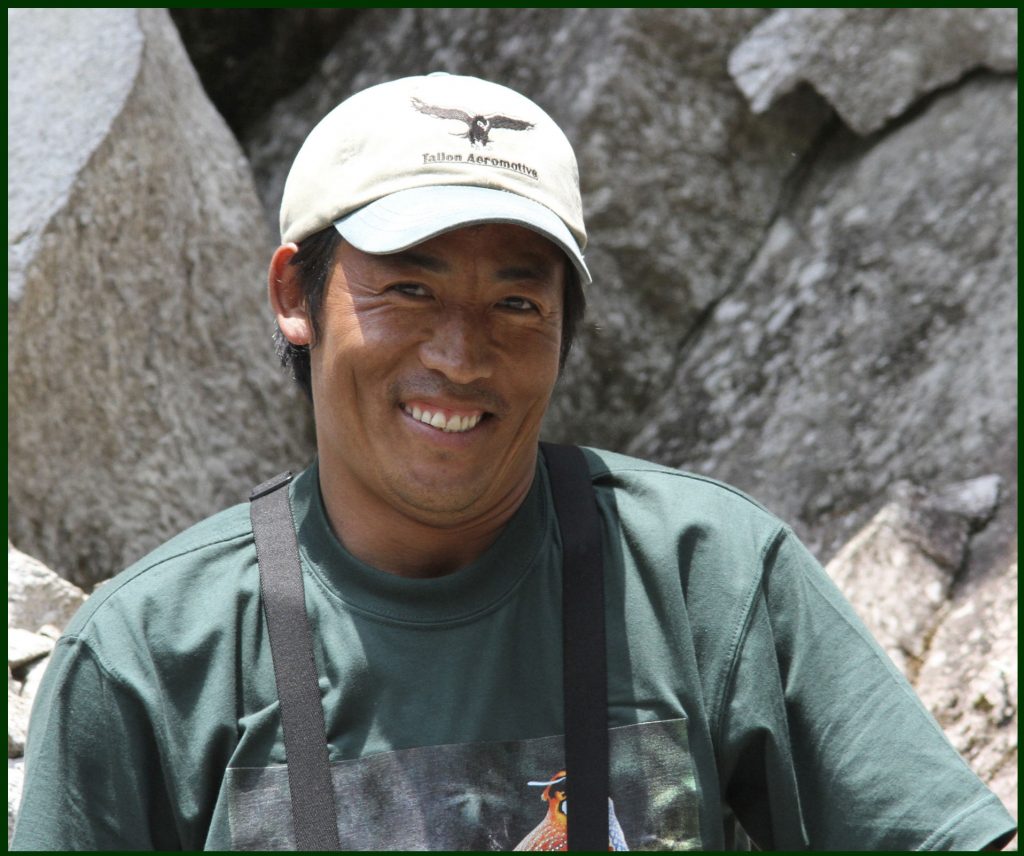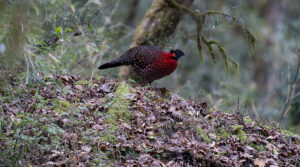
Feathers the Frost




This is another lean season tour that we have been running successfully from the past two years; this tour is specially focused on the wintering migrants including Black-necked Cranes, globally threatened species. Other interesting species we will encounter include as migrant Wallcreeper, Ducks and Waders, Thrushes, Rosefinches and Redstarts. We also have a good chance for other resident species including three species of Pheasants, two species of Hornbills, and varieties of Laughingthrushes, Sunbirds, Woodpecker, Parrotbills and many more. However, this is a difficult season in finding some of the skulkers like Wren Babbler, Tesia, and Shortwing.
This trip starts from Paro, the only place in the country with the international airport and work out our way to central, east, and make a loop from the south and end in Paro. We’ll be covering 11 different districts of Bhutan on this tour and expected to see over 270 species of birds and 10 – 15 species of mammals such as three species of langurs, including the nearly endemic Golden Langur. Himalayan Giant Squirrel, Yellow-throated Marten and Himalayan Goral.
Other highlights include a visit to Bhutan’s most scenic icon and a most important destination for pilgrimages Taktsang Monastery (Tiger’s Nest), most beautiful and impressive Punakha Dzong and visit a typical Bhutanese farmhouse to experience the local hospitality.
Day 1 | Arrive Paro, our representative will receive you. transfer to the hotel, after some downtime and refreshment start birding around Paro valley and Paro river. Overnight: Paro |
Day 2 | Chelila Birding: we’ll set off early in the morning tothe cool alpine meadow of Chelila pass, the highest drivable pass in Bhutan, theforests on the way up can be good for many high-altitude species. Afternoon: free time to stroll the Paro town. Overnight: Paro |
Day 3 | Paro – Tiger’s Nest – transfer Thimphu: After breakfast take 30 minutes to drive to the parking lot at the base of the Tiger’s Nest monastery and hike to one of the most beautiful and holiest temples in Bhutan, evening transfer to Thimphu. Overnight Thimphu |
Day 4 | Thimphu – Dochula – Punakha: Early morning drive to Punakha over the Dochula Pass (3150). En route to Punakha stop at Lamperi Botanical. Afternoon: Visit Punakha Dzong, one of the most beautiful Dzong in the country. Overnight: Punakha |
Day 5 | Punakha – Jigme Dorji National Park: we will spend the morning birding inside the Jigme Dorji National Park along the Mochu Chu River. Afternoon birding along the Pho Chu River and Punatshangchu River. Overnight: Punakha |
Day 6 | Punakha – Nobding – Phobjekha: Early morningyou’ll wind up your way to the Phobjekha Valley. En route, we’ll spend a couple of hours birding the entire stretch of Nobding and continue our journey to Phobjekha. Overnight: Phobjekha |
Day 7 | Phobjekha – Pelela – Bumthang: we’ll spend our morning hours birding along the Pelela pass (3400) old road. Continue your drive to Bumthang with some birding stops along the way: Overnight: Bumthang |
Day 8 | Bumthang– Phrumshingla – Yongkala: we drive from Bumthang to Yongkala going over Phrumshingla (3800m). later in the afternoon birding along the forest of Namling and Yongkala. Overnight: Yongkala |
Day 9-10 | Yongkala – Namling – Limithang Road: We’ll spend two entire days birding Namling, upper and lower Limithang road, one of the finest birding areas in the Himalayas: Overnight: Yongkala |
Day 11 | Yongkala – Korila – Trashigang- Journey to Trashigang with several birding stops along the way in a wide range of habitats from the cultivation, small settlement, chir pine forest to mid-altitude forest rich with mosses, lichens, and rhododendrons. Overnight Trashigang |
Day 12 | Trashigang – Wamrong – Samdrup Jongkhar: our journey takes us through a lush green mid-range forest filled with rhododendrons. In the evening we will hit the low elevation, the lowest ever being of the trip. Overnight Samdrup Jongkhar |
Day 13 | SamdrupJongkhar – Deothang – Morong We will enjoy the full day of birding in between Samdrup Jongkhar and Dewathang the stretch of 18 km road with the elevation ranging from 150m – 500m. the subtropical evergreen forest here are good habitat for many lowland species. Overnight: Samdrup Jongkhar |
Day 14 | Departure |
This birding tour will be on selected sites that do not pose any threats such as steep slopes. During these trips, you should expect yourself to walk at least 6-7 kilometers on average per day
The best time for watching birds is in the morning. You can expect an early start in the morning most of the time. However, a couple of very early mornings are required to look for high elevation dwelling Pheasant that comes out to the roadside early in the morning.
Accommodation on this tour is generally simple but comfortable. The hotels are generally spacious, clean, and comfortable, built-in westernized Bhutanese style, and all rooms have private facilities. However, due to the limited availability of good lodges and hotels in some remote parts of the country, you will spend a couple of nights in basic hotels or tented camps.
Generally, the weather should be mostly fine and sunny during the daytime with temperatures varying from 5-25°C but it can get quite cold and chilly at night and during early morning game drives it can feel bitterly cold until the rising sun warms things up. Please be prepared as it could be cold at night and lodges are not centrally heated.
What is Included?
- • All internal taxes and charges (including SDF)
- • Accommodation on twin sharing basis
- • All meals, tea, snack and bottled water
- • All travel with a licensed local birding guide
- • All surface transfers by a private vehicle
- • Camping equipment and haulage for camping and trekking tours
- • All entry fees to monuments, Museum and National Parks
- • Bhutan Visa Fee
What is not Included?
- • Optional tours/excursions, personal & incidental expenses.
- • Tips, laundry, phone calls, and bars
- • International and domestic airfare, and insurance

Sherab Dorji, after completing his high school education, was selected to be an archer for the Bhutan Olympic Committee. As an archer, he traveled to many different countries representing Bhutan in both regional and international competitions. This great opportunity gave him the chance to become very familiar with other cultures.
He occasionally began to take some trips into the wilder areas of Bhutan with Norbu his cousin during his free time as an archer and he started to fall in love with nature. He then decided to quit his profession as an archer and became a full-time birding guide. He was also fortunate to be chosen as one of the several guides to receive special, extensive bird watching training given by well-known American birder Tom Stephenson (Co-Author of The Warbler Guide).
Today, Sherab is one of the top-grade birding guides in the country with many years of guiding experience in guiding international birding clients



